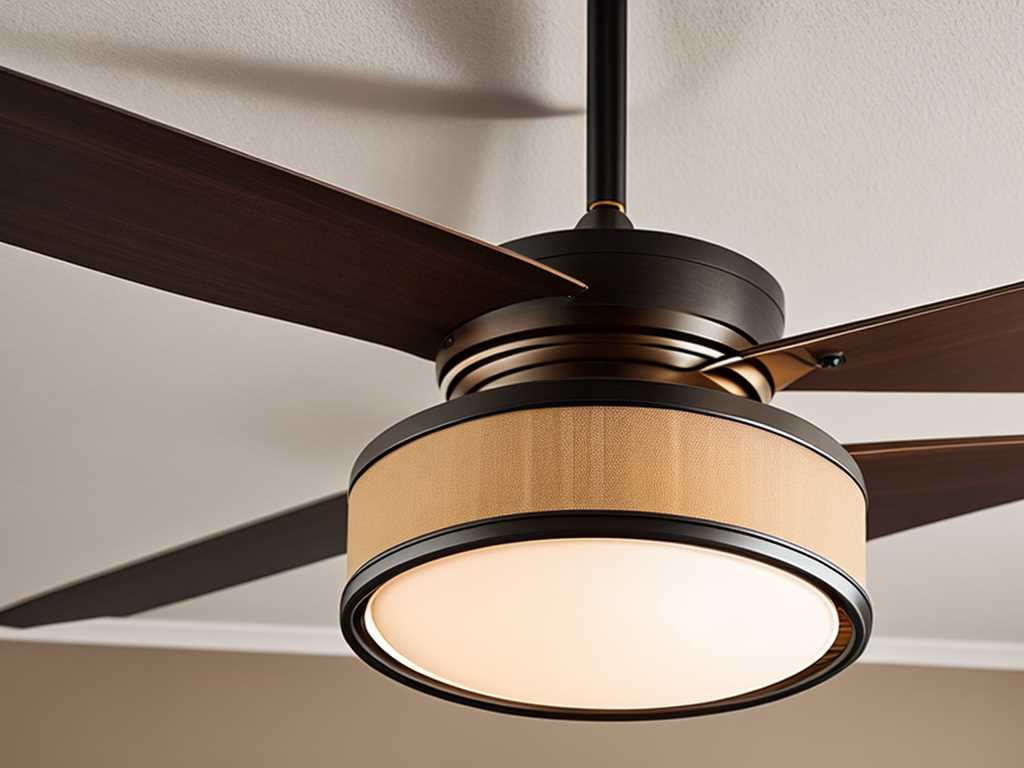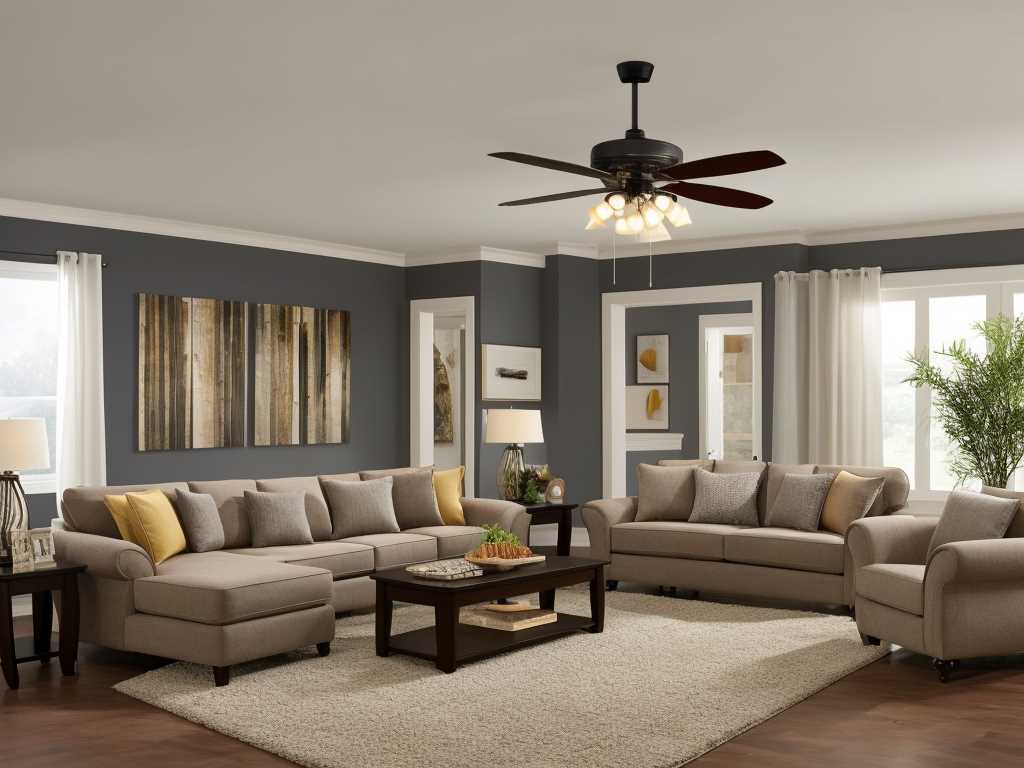
When it comes to choosing the right ceiling fan for your living room, size matters. The size of a ceiling fan can affect its performance, efficiency, and the overall appearance of the room. In this article, we will discuss the factors you should consider when selecting the appropriate size ceiling fan for your living room.
Room Size
The size of your living room is the most important factor to consider when selecting a ceiling fan. A ceiling fan that is too small or too big for your living room can negatively affect its performance and efficiency. For optimal performance, the size of the ceiling fan should match the size of the room.
To determine the appropriate size ceiling fan for your living room, measure the length and width of the room in feet. Then use the following guidelines:

– For rooms up to 75 square feet, a 29-36 inch ceiling fan is recommended.
– For rooms between 76 and 144 square feet, a 36-42 inch ceiling fan is recommended.
– For rooms between 145 and 225 square feet, a 44-52 inch ceiling fan is recommended.
– For rooms larger than 225 square feet, multiple ceiling fans or a single fan with a blade span of 60 inches or more may be necessary.
Ceiling Height
The height of your ceiling can also affect the size of the ceiling fan you should select. For optimal performance, the blades of the ceiling fan should be at least 7 feet above the ground. If your ceiling is higher than 8 feet, you may need to use an extension rod to lower the fan to the appropriate height.
If your ceiling is 8 feet or lower, a flush mount ceiling fan is recommended. Flush mount ceiling fans are designed to be installed directly to the ceiling without the use of an extension rod. They are ideal for rooms with low ceilings as they do not hang too low and take up unnecessary headspace.
Blade Span

The blade span of a ceiling fan refers to the diameter of the circle formed by the rotating blades. The blade span can affect the airflow and performance of the fan. Generally, the larger the blade span, the more air the fan can move.
However, it is important to note that the number of blades also affects the airflow. A ceiling fan with fewer blades may move more air than a fan with more blades, despite having a smaller blade span.
Fan Motor
The motor of a ceiling fan is responsible for its performance and efficiency. A good quality motor can make a significant difference in the airflow and noise level of the fan. When selecting a ceiling fan, look for a fan with a high-quality motor that is energy efficient and quiet.
The style of the ceiling fan should also be considered when selecting the appropriate size for your living room. Ceiling fans are available in a variety of styles, including modern, traditional, rustic, and industrial. Choose a style that complements the décor of your living room and fits your personal style.
Installation
Lastly, it is important to consider the installation process when selecting a ceiling fan. Some ceiling fans require professional installation, while others can be installed by the homeowner. Choose a fan that is easy to install and comes with clear instructions.
Selecting the appropriate size ceiling fan for your living room is essential for optimal performance and efficiency. Consider the size of the room, ceiling height, blade span, fan motor, style, and installation process when selecting a ceiling fan. By taking these factors into account, you can ensure that your ceiling fan is the perfect fit for your living room and provides optimal comfort and performance.


